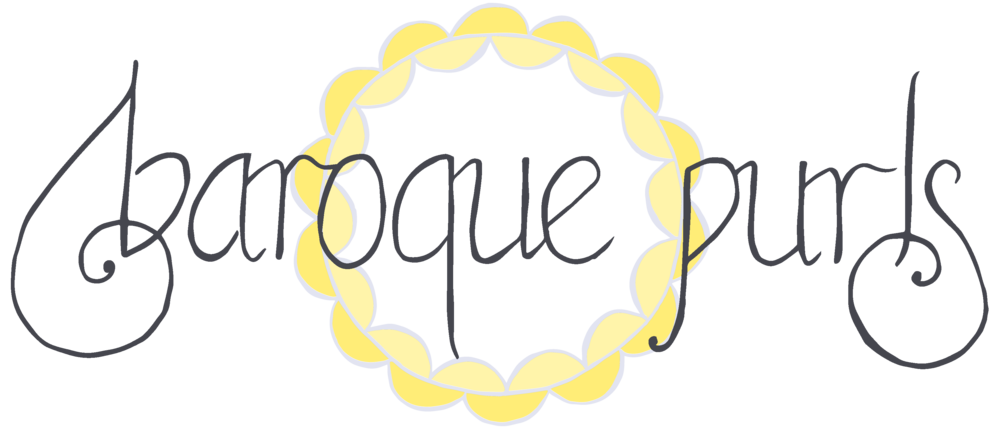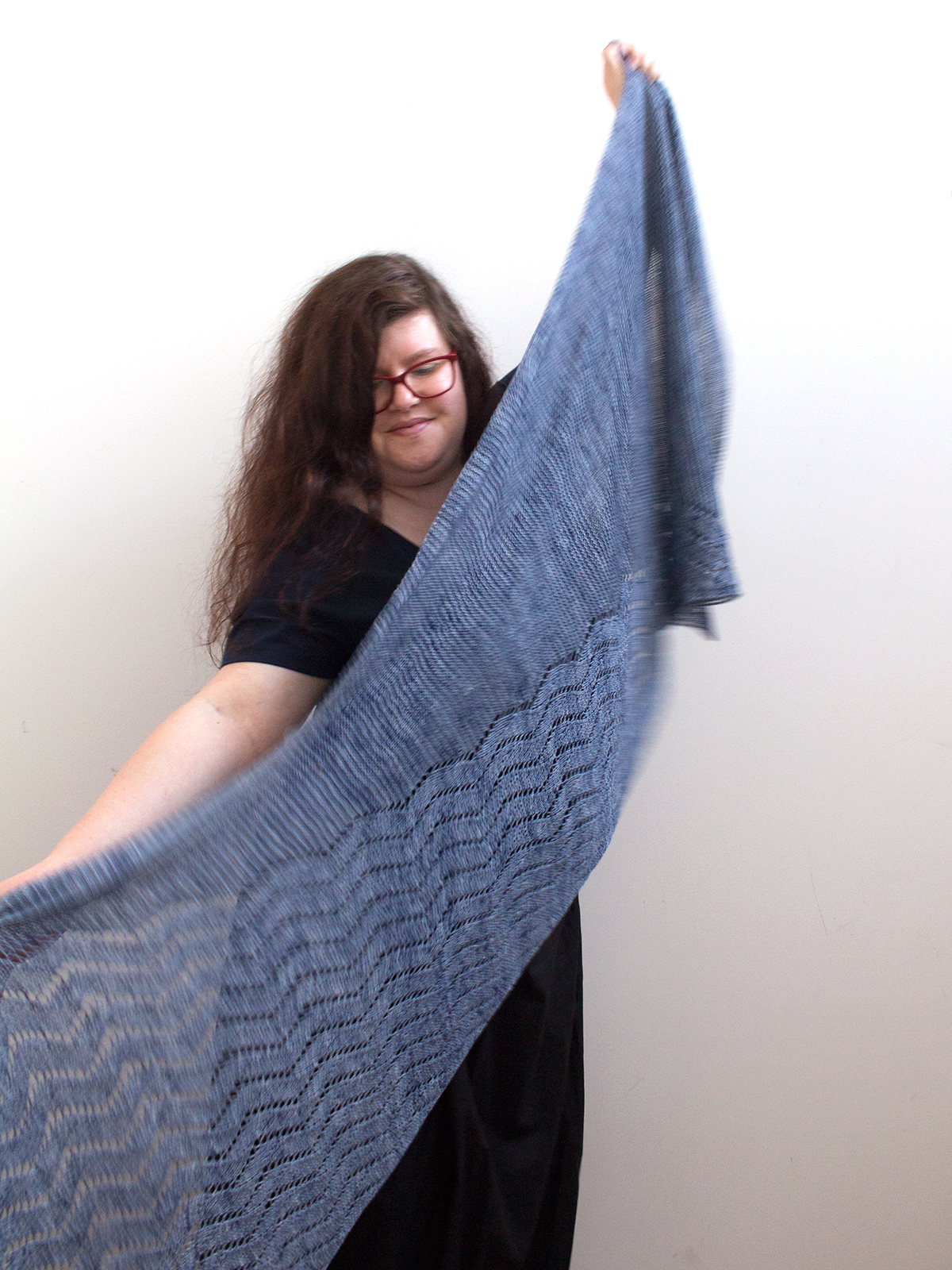My Oil Paint Cowl showcases a type of colourwork knitting that’s similar to stranded knitting (or fairisle), but has some unique properties of its own. In ‘marlisle’ colourwork, the foreground pattern is stranded in the usual way, but the background is marled, i.e. it’s worked with both colours of yarn held together.
Read MoreNew pattern: Oil Paint Cowl
The Oil Paint Cowl is a cosy cowl with textured colour-play inspired by the paintings of Vincent Van Gogh. The all-over colourwork pattern uses the brilliant ‘marlisle’ technique pioneered by Anna Maltz, which adds textural contrast and colour-mixing to stranded colourwork. The foreground pattern of brushstrokes is stranded using one colour only, and the background is worked in garter stitch with both colours held together.
I was lucky enough to visit an amazing Van Gogh exhibition last year at the National Gallery of Victoria, and I snapped a few photos of details I liked - you can see some of my favourites below. The colours, textures, and movement of the paint ended up inspiring this cowl design. I suggest picking one of your own favourite paintings to help choose your yarn colours!
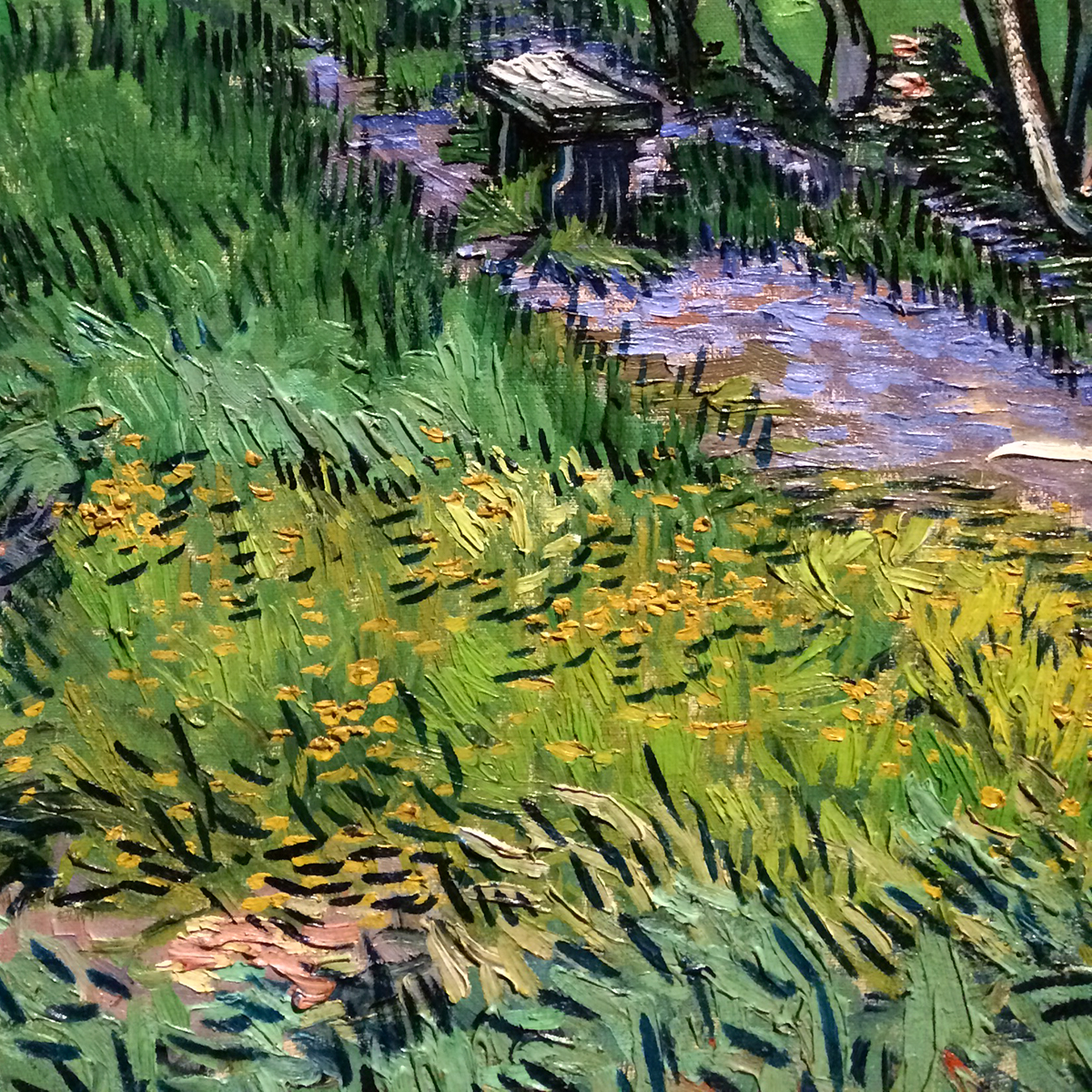
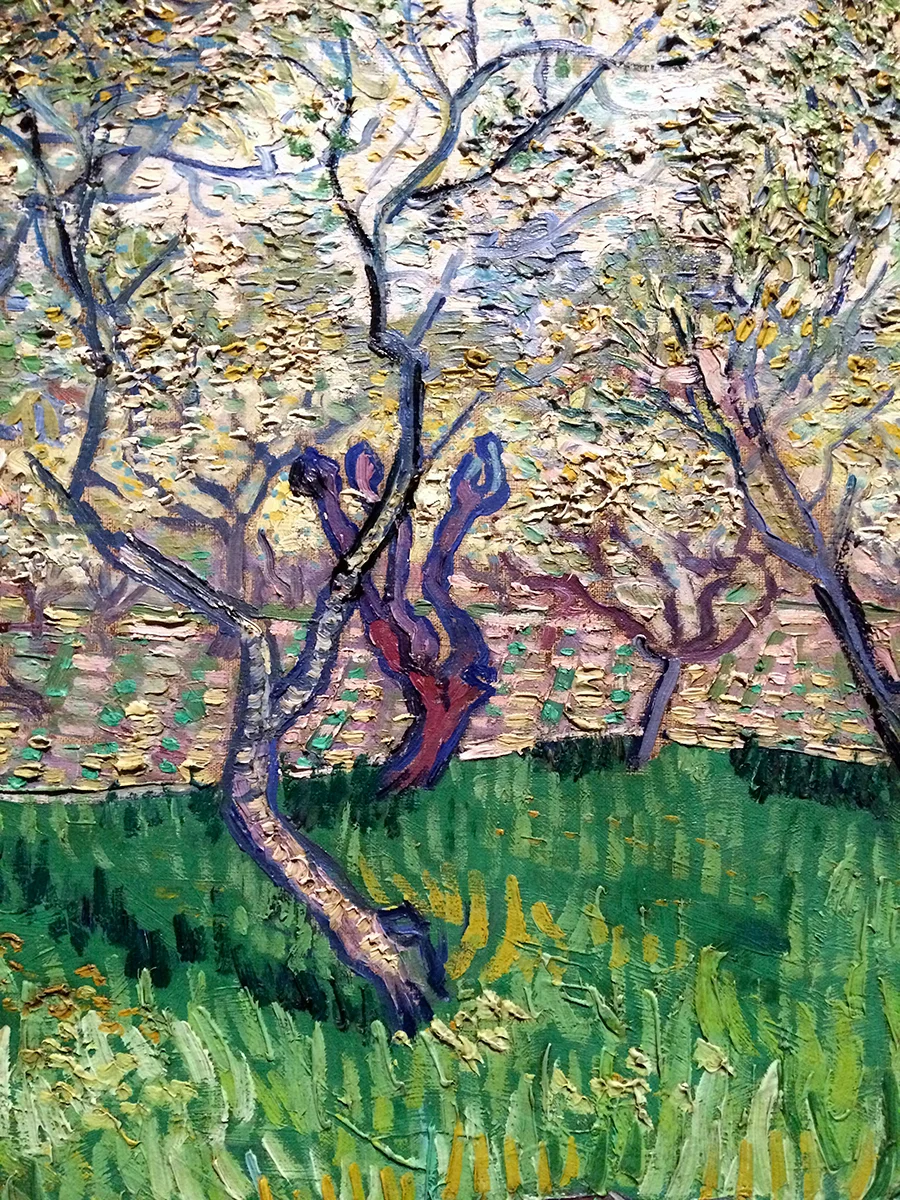
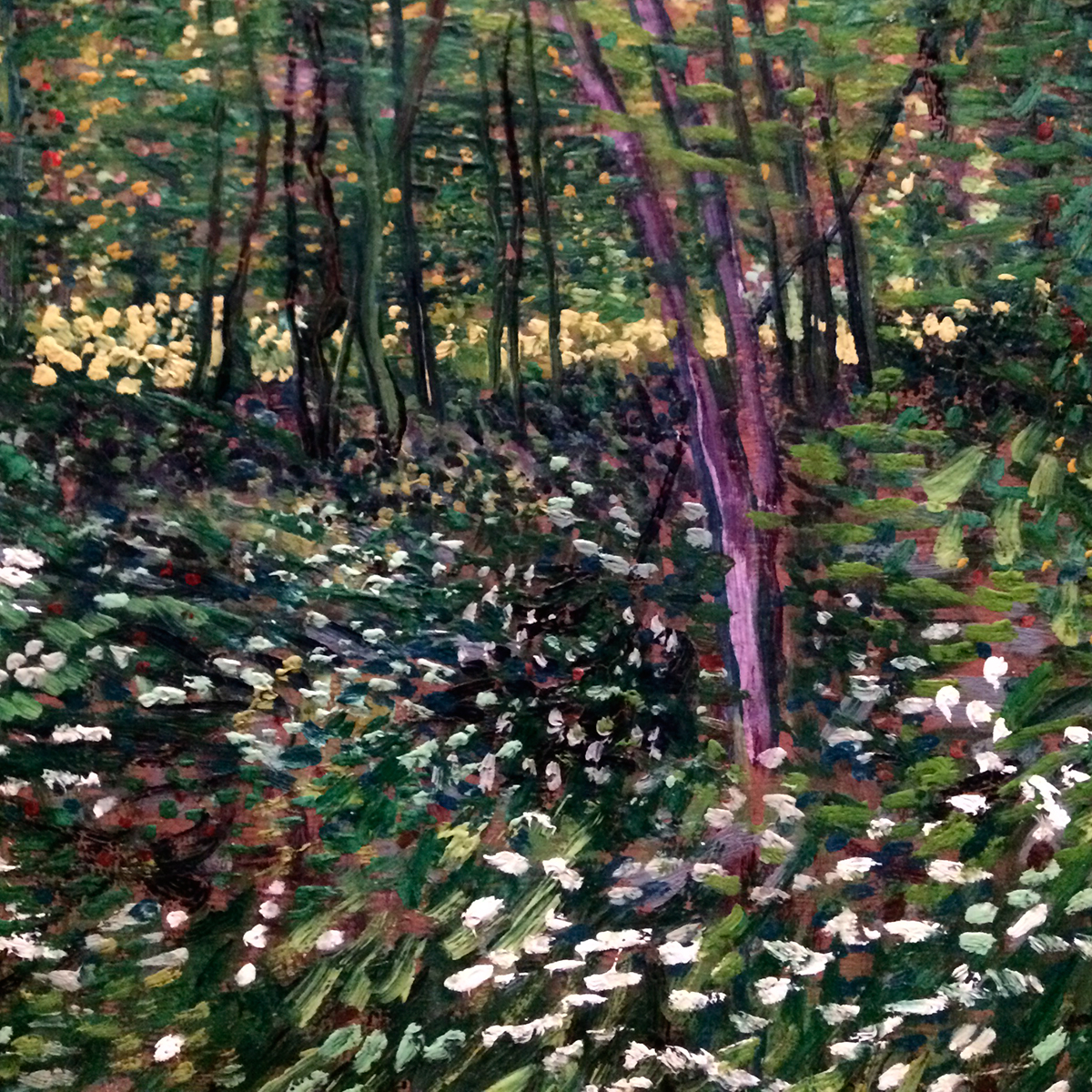
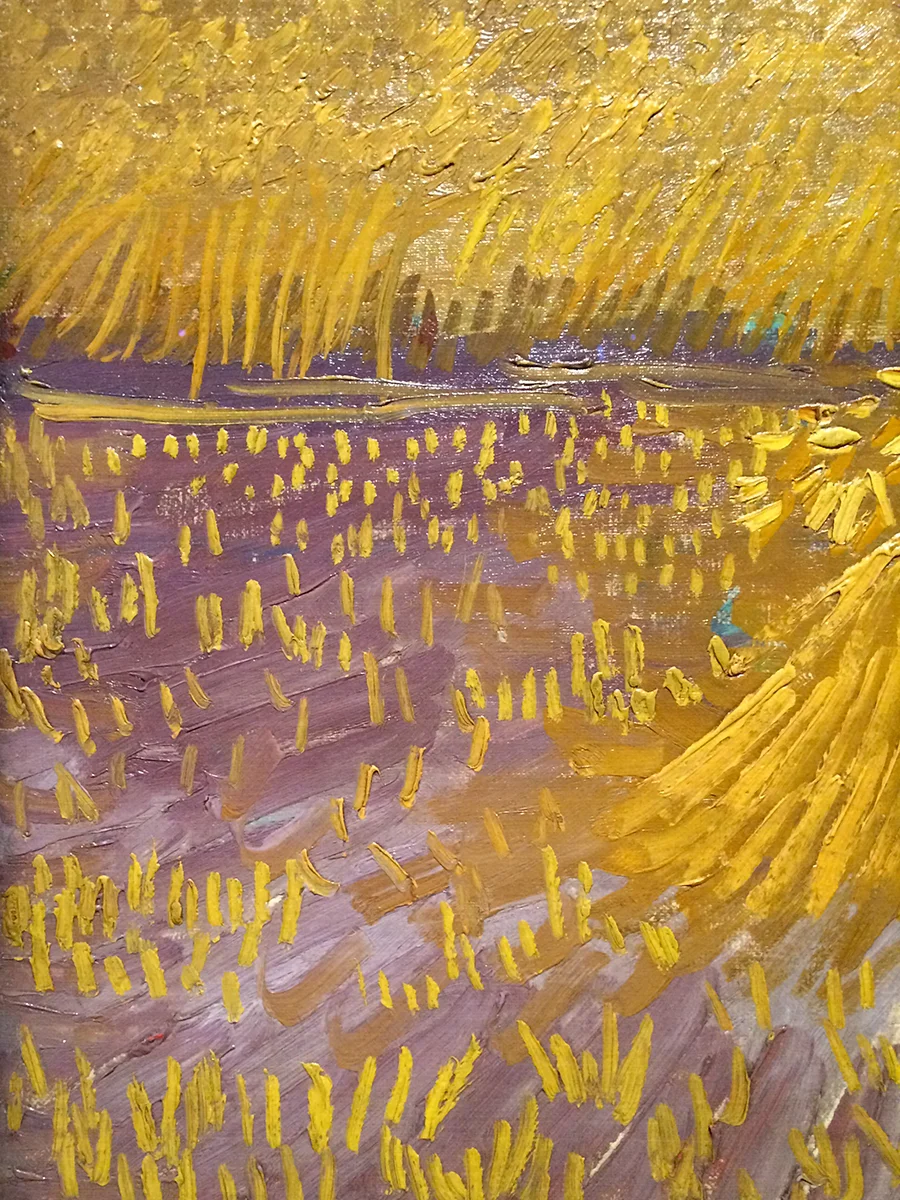
I knit my cowl using two skeins of Malabrigo Mechita (100% merino; 420yds/384m per 100g skein). To keep the brushstroke pattern well defined I chose the semi-solid colourway ‘Frank Ochre’ for the stranded stitches, which also shimmers beautifully in the marled garter stitch background. And to really bring out the impressionist painting effect, I chose the variegated colourway ‘Sheri’ for the background, to add extra richness and depth.
I also tested out the combination of Frank Ochre and Glitter, and the swatch reminds me of Van Gogh’s paintings of fading sunflowers. But in the end I went with Sheri for the background, because the cool tones give a livelier contrast with Frank Ochre.
Oil Paint Cowl features:
a cosy short cowl knit in the round from the bottom up
all-over marlisle colourwork pattern of stylised brushstrokes
techniques include stranded colourwork, and knitting in the round
suitable for solid or semi-solid fingering-weight yarn with contrast between the two colours
the background/MC also suits variegated yarn or colour gradients
one size, easy to alter by changing the number of repeats
pattern includes full written instructions as well as charts (made possible by the small 8-stitch repeat).
Find out more about my Oil Paint Cowl pattern, including Ravelry and Payhip purchase options.
New pattern: Whitewater Wrap
The Whitewater Wrap is a large rectangular shawl in flowing lace and restful garter stitch. My inspiration for the wrap is the waterfall in the middle of my hometown, Wairere falls in Whakatāne, a special place where I spent a lot of time exploring and climbing on the rocks as a kid.
The wrap is divided in half diagonally, with lace on one side and garter stitch on the other, but it's constructed very simply - just knit from end, with a stitch marker keeping track of the boundary between the two stitch patterns. I found it a relaxing knit, with intuitive lace and simple knit-and-purl wrong-side rows.
The lace pattern is made up of flowing lines of yarnovers and decreases, with sinuous shapes appearing and disappearing between them. This movement in the lace causes the stockinette stitches to shift direction, catching the light at different angles for a shimmering effect.
To knit my sample I used three skeins of Sock Yarn from Wren & Ollie, a soft blend of 85% superwash merino and 15% nylon, in a beautiful and subtle colourway called ‘Glisten’. I love the extra depth the gentle speckles give to the stitch patterns!
Whitewater Wrap features:
rectangular shape, with the lace end slanted on the bias
half flowing lace, half restful garter stitch
knit in one piece from end to end
techniques include simple lace knitting (knit, purl, yarn-over, k2tog, ssk)
suitable for solid, semi-solid, or gently-speckled fingering-weight yarn
one size, easy to alter by changing the number of repeats
pattern includes full written instructions as well as charts.
Find out more about my Whitewater Wrap pattern, including Ravelry and Payhip purchase options.
How to work mini-cables without a cable needle
Simple mini-cables, like those featured in my Beeswax Hat, Cowl, and Mitts, are easy to work without using a cable needle. If you're a cable lover, this is a brilliant trick to be familiar with - especially if you have a tendency to leave your notions bag in another room!
My favourite method is the 'slip and switch' method, which mirrors the movements of k2tog and ssk decreases. The difference is that after rearranging the stitches, you work them individually instead of decreasing them together.
Read MoreHow to block scalloped edges
The scalloped edges of my Beeswax Shawl are one of its most special features, formed by working increases or decreases at the ends of certain rows. I was determined to preserve these rippling edges during blocking, and I came up with the following method which worked very well. This method could be adapted for any shawl with a rippling edge, if you want a very even ripple and/or dislike using lots of pins.
Read More